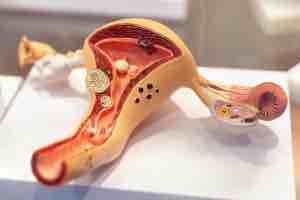
All over the world, cervical disease is the fourth most common among women.
The primary concerns are monitoring and prevention. The aim is to decrease the medical system’s burden and the mortality rate for this disease. In the United Kingdom and other developing countries, most monitoring efforts are directed toward the early discovery of risky human papillomavirus types through HPV research testing and pap smears. Medical professional team members must accept that cervical cancer is a preventable disease. It is largely curable even in sexually active women if they receive its vaccination early. Regular STI Results Sampling is another refreshing approach.
What’s the link between Cervical Disease and Human Papillomavirus?
Cervical cancer grows in a woman’s cervix, which is the entrance of the uterus from the vagina. Almost 99% of these cases are linked to the high-risk HPV virus. This STD virus is extremely common and transmits easily through sexual contact. Although, most of these infections resolve spontaneously without causing symptoms. However, constant STI infections can help with the development of this disease in the cervix of women.
According to a 2018 estimation, around 570,000 women worldwide were diagnosed. Additionally, about 311,000 women died from this condition. Effective primary and secondary prevention approaches (HPV Variant Sampling and vaccines for treating precancerous lesions) will prevent most cases of this type of disease.
If this cervical disease is found at an early stage with proper management, it is one of the most successfully treatable forms.
WHO’s Elimination Approach is working?
The World Health Organization aims that no woman should die from cervix cancer. They have the technical, medical and policy tools and approaches to remove this disease. Women lacking access to health services hold the toughest burden of this disease. Mainly, the women of low and middle-income countries suffer from its devastating outcomes.
The Director-General of the World Health Organization announced a global call to action towards removing cervical cancer in May 2018. It underscored renewed political will to remove a reality and called for all stakeholders to unite behind this common goal.
In January 2019, the Executive Board requested the Director-General establish a draft global plan to urge the removal of cervical cancer, with clear targets for 2020–2030. Other partners and organizations were also present.
Sampling for Early Detection is the solution?
Monitoring Human Papillomavirus is crucial for the early detection of STD cervical tumour. This very common infection can cause changes in cervix cells, potentially leading to cancerous growth without proper treatment. Regular monitoring for this infection allows medical professionals to identify individuals at risk and take necessary preventive measures.
Through routine monitoring, such as Pap smears or HPV DNA tests, medical workers can detect any abnormal cell changes in the cervix that may indicate the presence of HPV or early signs. Finding it early increases the treatment’s chances of success and improves outcomes.
Monitoring this infection is particularly important for sexually active individuals. The risk of contracting the virus increases with sexual activity. Medical professionals recommend that individuals begin monitoring for Human Papillomavirus in their late teens or early twenties. Moreover, for some people, doctors advise it according to their condition.
Regular monitoring allows medical workers to identify STD risky individuals, provide appropriate counselling, and ensure timely interventions. Regular monitoring can help prevent the development and progression of cervical cancer, ultimately saving lives. Individuals must prioritize this monitoring as a proactive step toward maintaining their reproductive STD health and overall well-being.
Fighting Cervical Disease is helping?
Monitoring sexual infections plays a crucial role in this fight. Certain strains of the Human Papillomavirus, a common STI, primarily cause this type of disease. Regular monitoring allows for the early finding and treatment of HPV infections, thus reducing the risk of developing this fatal condition.

STI Kits
It also helps to identify individuals who may be carrying the HPV virus, even if they do not exhibit any symptoms. By finding the presence of this virus early on, medical professionals can monitor the cervix health of an individual and initiate appropriate interventions if necessary. This may include further monitoring, vaccinations, or medical treatments to prevent the cancerous growth of the cervix.
Regular STI screening and routine monitoring ensure that potential abnormalities or infections are detected promptly. It increases the chances of successful treatment and recovery. Moreover, by using this exam, individuals can actively protect the health of their cervix and fight against cervical cancer. It is important to make regular STI test monitoring common, especially for sexually active individuals. It will benefit as part of a complete approach to maintaining reproductive health and overall life.
Conclusion: Is Sampling only a part of the solution?
Remove the disease from the world. HPV DNA Variant testing is a goal that some believe can be achieved by taking active measures. By actively monitoring, medical professionals can detect the presence of high-risk STD strains. They can also find individuals at risk of it developing in the cervix. Early findings help to take proper STI steps such as monitoring, vaccinations, tests and treatments. These steps can help to stop the growth of the disease. Additionally, we can work towards eliminating this devastating disease by promoting regular test kits and implementing preventive STI strategies. Therefore, empowering individuals with knowledge, giving access to monitoring programs, and effective medical practices will contribute to successfully removing cervical cancer and promoting women’s health worldwide.
